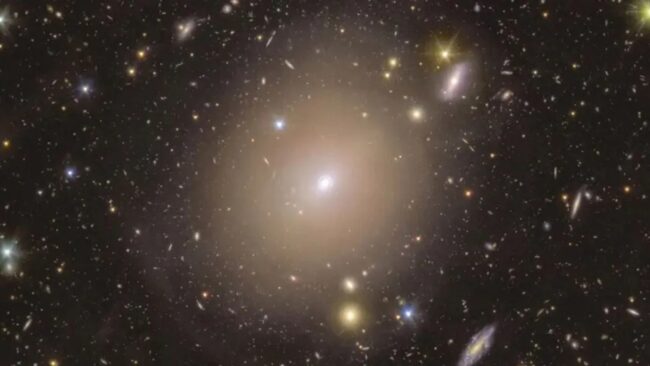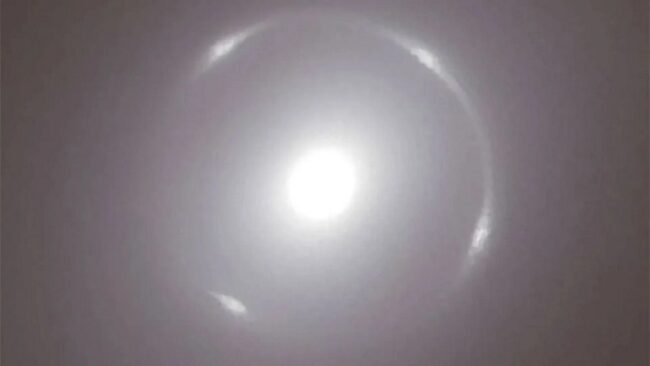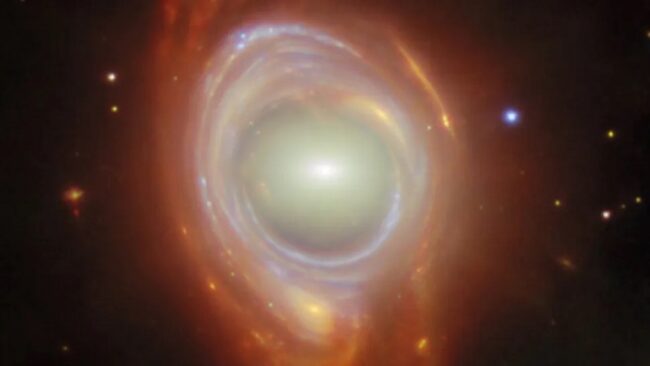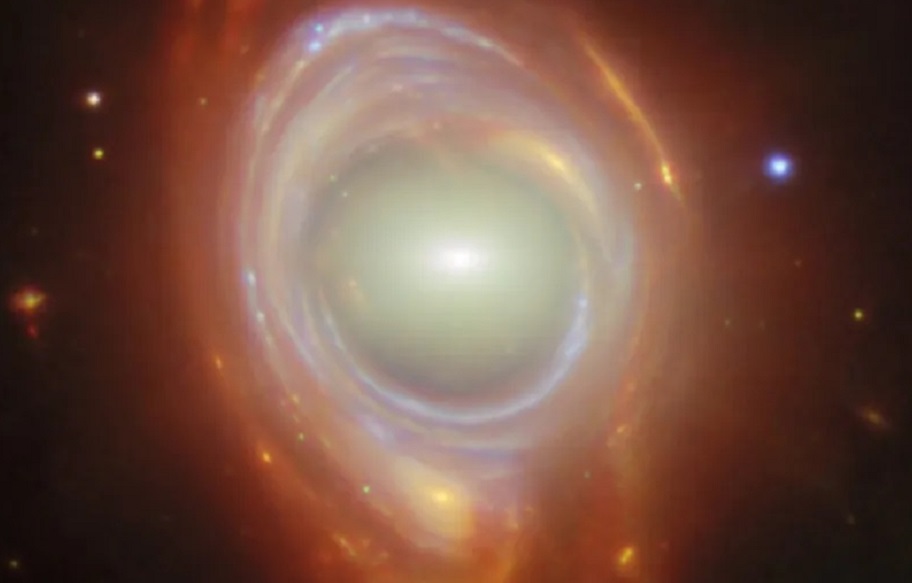The space telescope's image of an odd-looking spiral galaxy is, in reality, two distant galaxies overlapping each other. An elliptical galaxy and
The space telescope’s image of an odd-looking spiral galaxy is, in reality, two distant galaxies overlapping each other.
An elliptical galaxy and a spiral galaxy appear as one celestial body as a result of the effects of mass on spacetime, the fabric of the universe, reported NASA.

Two celestial bodies become one in a rare cosmic phenomenon called an “Einstein ring.”
Einstein rings are the result of light from one very distant object being lensed, or “bent” about a massive object located in between the target and the viewer. This effect, which demonstrates that light and spacetime, the fabric of the universe, can be bent by mass, cannot be observed on a local level.
It sometimes can occur, though, when the curvature of light is on tremendous scales, such as when the light from one galaxy is bent around another galaxy or galaxy cluster as seen here, reported NASA.

The elliptical galaxy at the center of this Einstein ring belongs to a galaxy cluster named SMACSJ0028.2-7537. It can be seen as the oval-shaped, featurless glow around the small bright core.
The spiral galaxy being wrapped or lensed around the elliptical galaxy appears to be stretched and warped into a ring, with bright blue lines drawn through it where the spiral arms have been stretched into circles, reported NASA.

The James Webb Space Telescope data used in this image was taken as part of the Strong Lensing and Cluster Evolution (SLICE) survey led by Guillaume Mahler at University of Liege in Belgium, together with a team of international astronomers. The survey is intended to trace 8 billion years of galaxy cluster evolution by targeting 182 galaxy clusters with Webb’s Near-InfraRed Camera instrument.

This image also incorporates data from two of the Hubble Space Telescope‘s instruments, the Wide Field Camera 3 and Advanced Camera for Surveys, as reported by NASA.
All Credit To: Space.com



COMMENTS